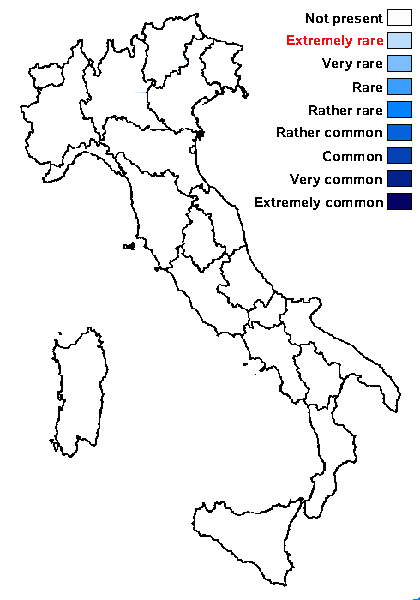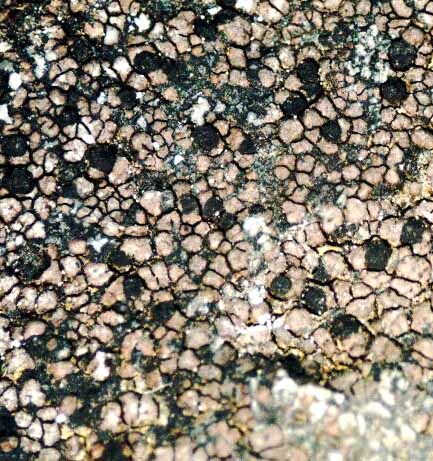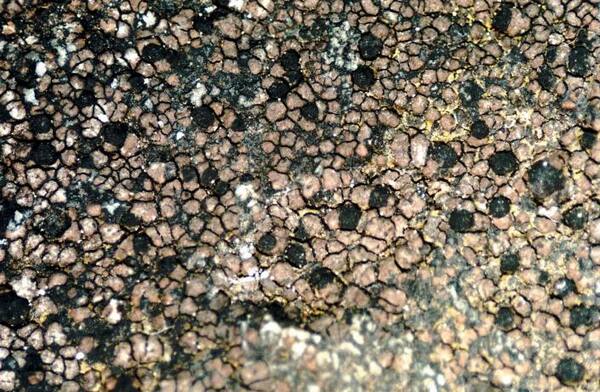Rhizocarpon subgeminatum Eitner
Jahresber. schles. Ges. vaterl. Kultur, 88, 2: 42, 1911 (1910).
Synonyms: Rhizocarpon phaeolepis Vain.
Distribution:
Description: Thallus crustose, episubstratic, brown to grey-brown, areolate, often delimited by a black prothallus. Areoles contiguous to dispersed, (3-)5-8 (-11) mm wide, flat to slightly convex, polygonal to rounded, epruinose. Medulla white, I-. Apothecia lecideine, black, rounded, irregularly arranged, 0.3-0.5(-0.7) mm across, with a flat to slightly convex disc and a (0.04-)0.05-0.11 mm thick, distinct and persistent proper margin. Proper exciple brown in lower part, reddish in upper part (the reddish parts reacting K+ purple); epithecium brownish green to blue-green, K- N+ red; hymenium colourless, rarely brownish or greenish in upper part, (100-)139-220(-250) µm high. Asci 2-spored, clavate, fissitunicate, with a well-developed tholus, lacking an ocular chamber, Rhizocarpon-type. Ascospores muriform, with (20-)25-39(-50) cells in optical view, long remaining hyaline, but turning light green when old, ellipsoid, 25-50(-63) x 13-28(-33) µm. Photobiont chlorococcoid. Spot tests; cortex and medulla K-, C-, KC-, UV-. Chemistry: thallus without lichen substances. Note: on siliceous rocks, often near brooks and lakes; for the Alps most records are from the Eastern Alps, all of them outside Italy; to be looked for in the Italian Alps.
Growth form: Crustose
Substrata: rocks
Photobiont: green algae other than Trentepohlia
Reproductive strategy: mainly sexual

Predictive model
Growth form: Crustose
Substrata: rocks
Photobiont: green algae other than Trentepohlia
Reproductive strategy: mainly sexual

Predictive model
 Index Fungorum
Index Fungorum
 GBIF
GBIF



